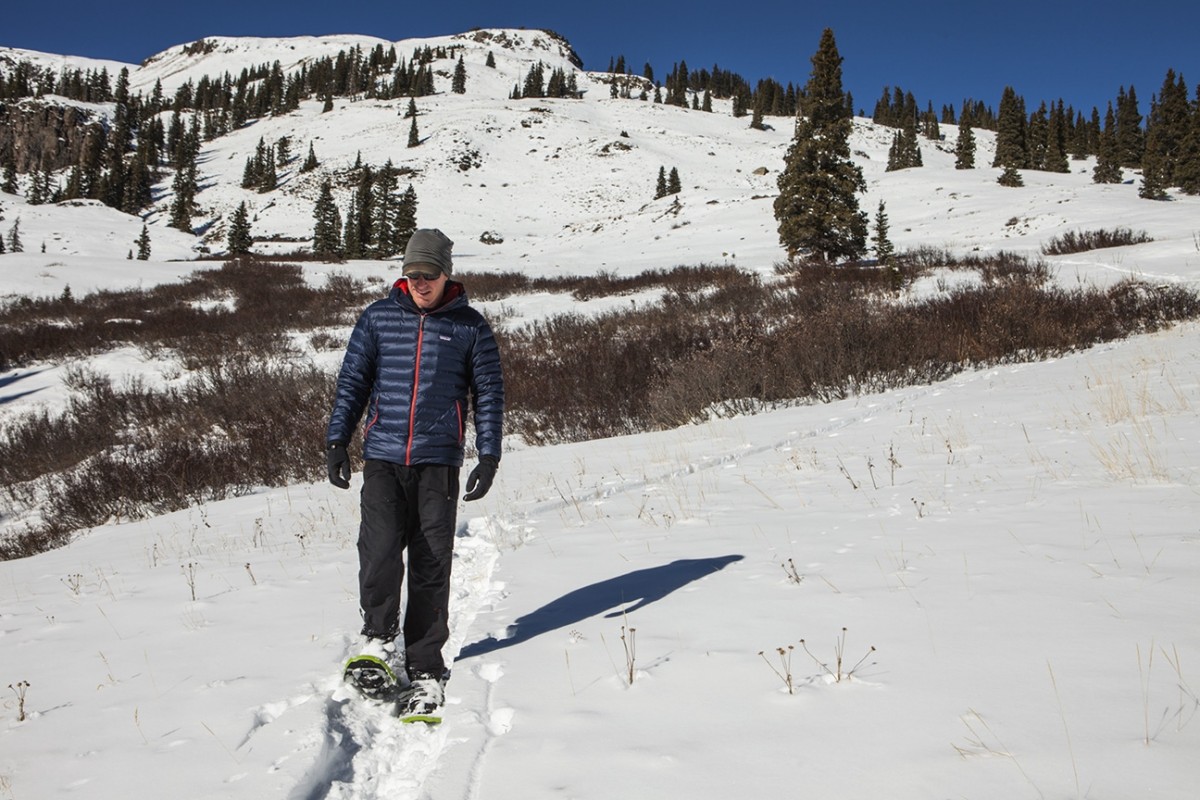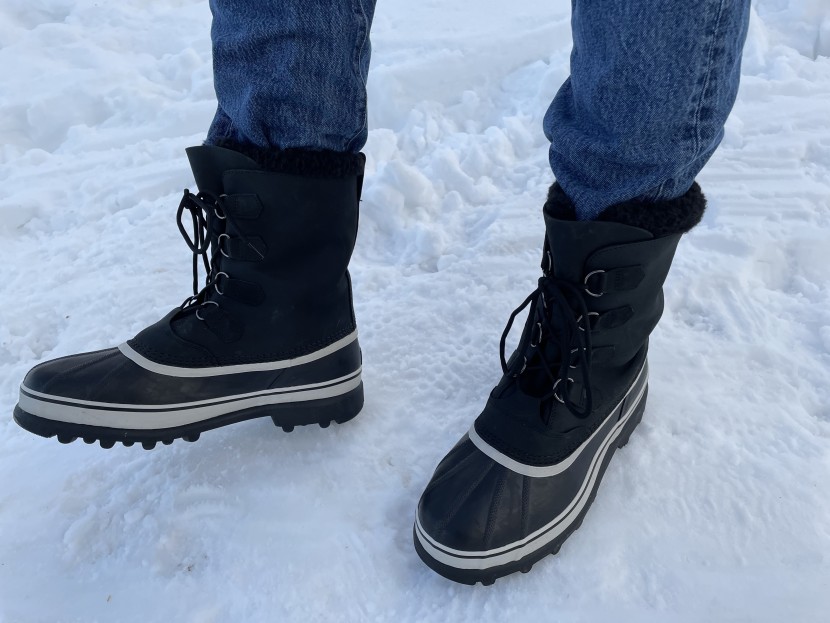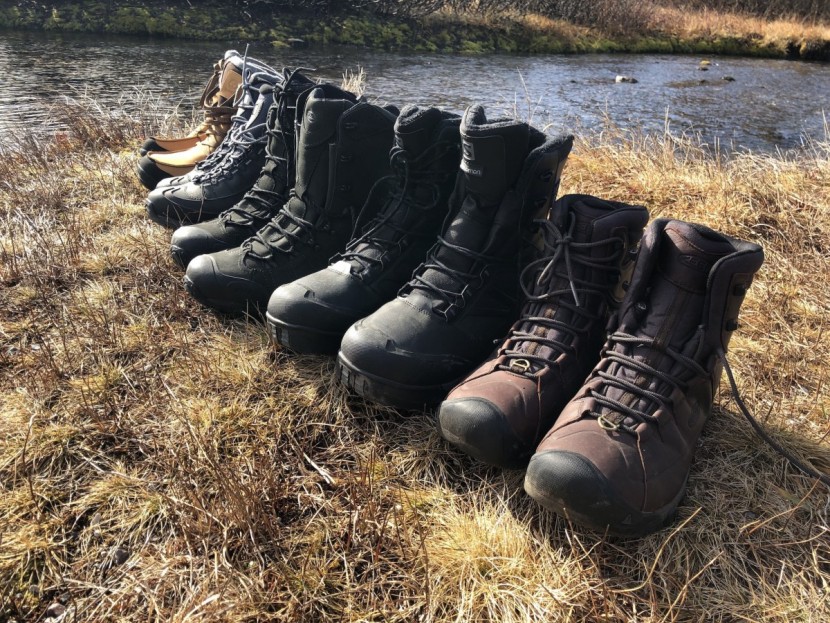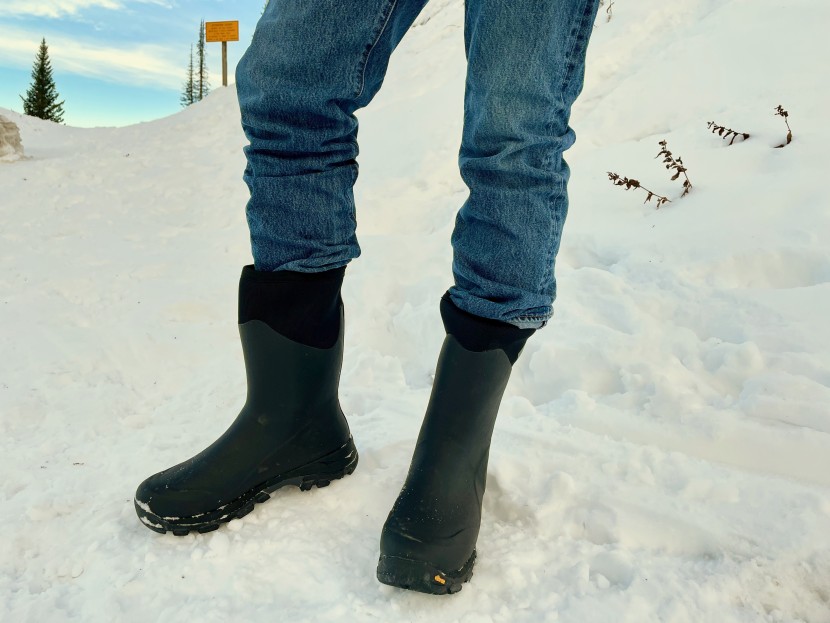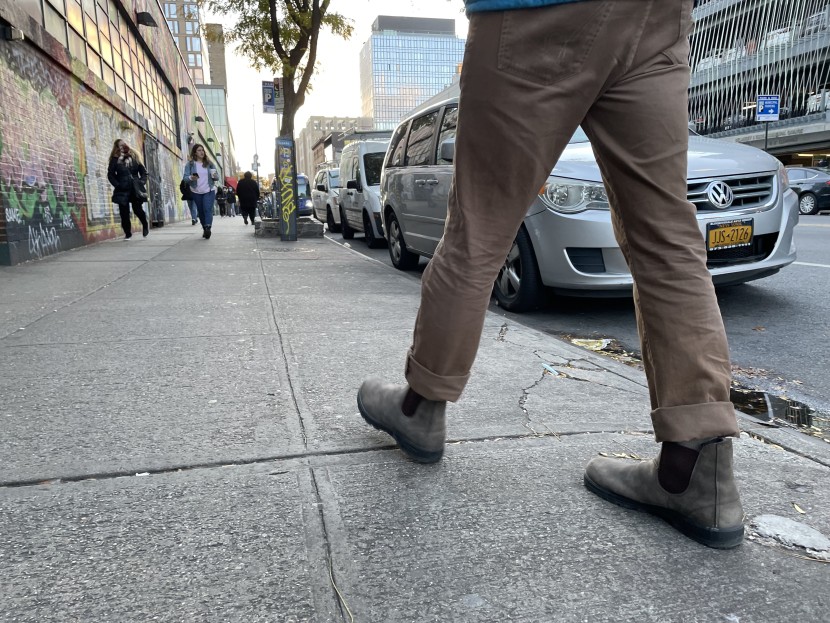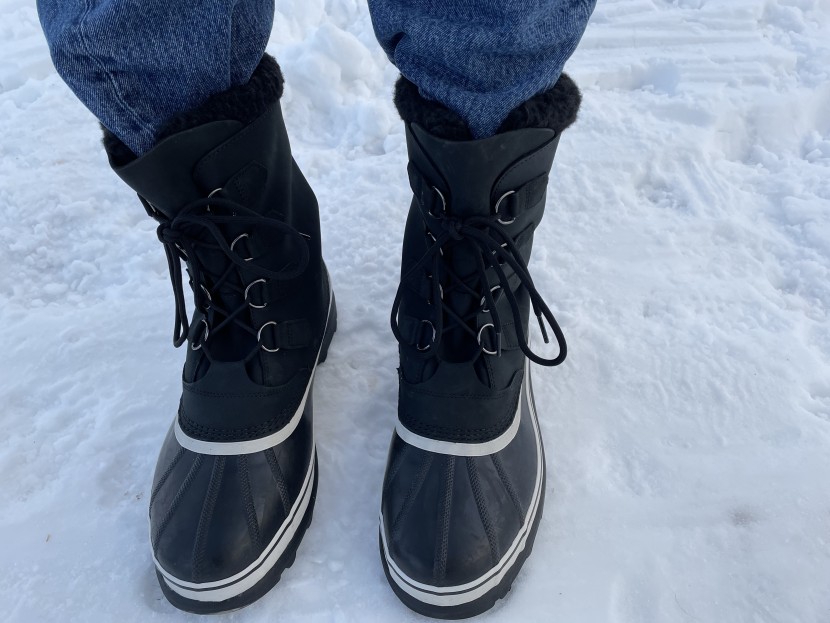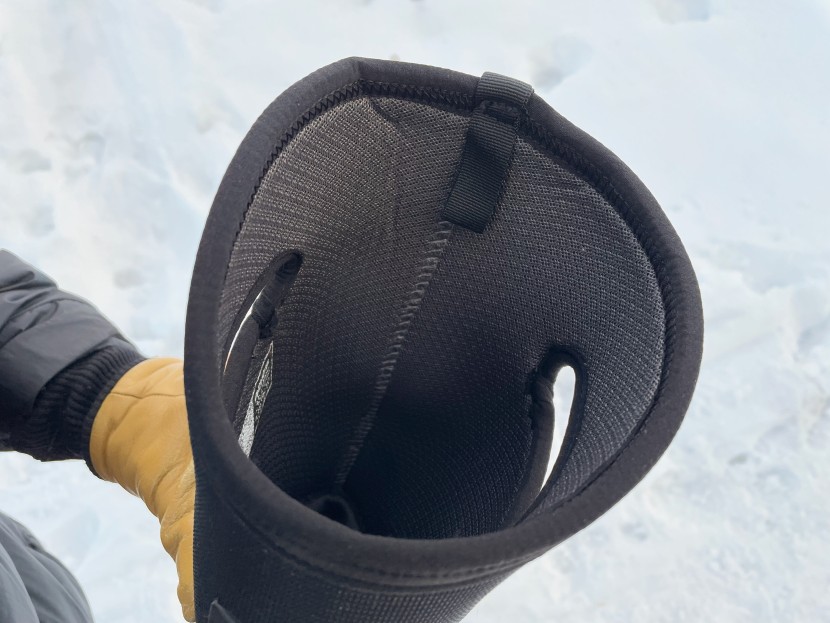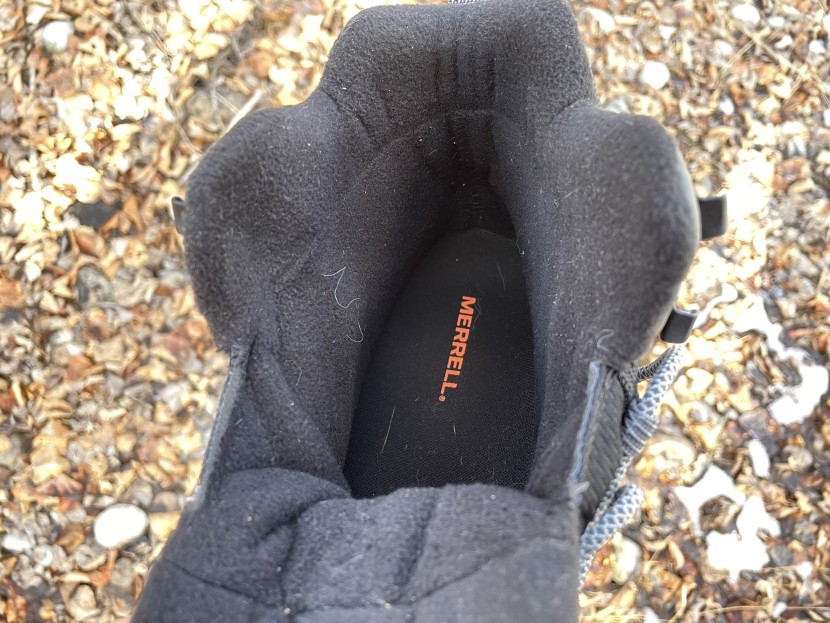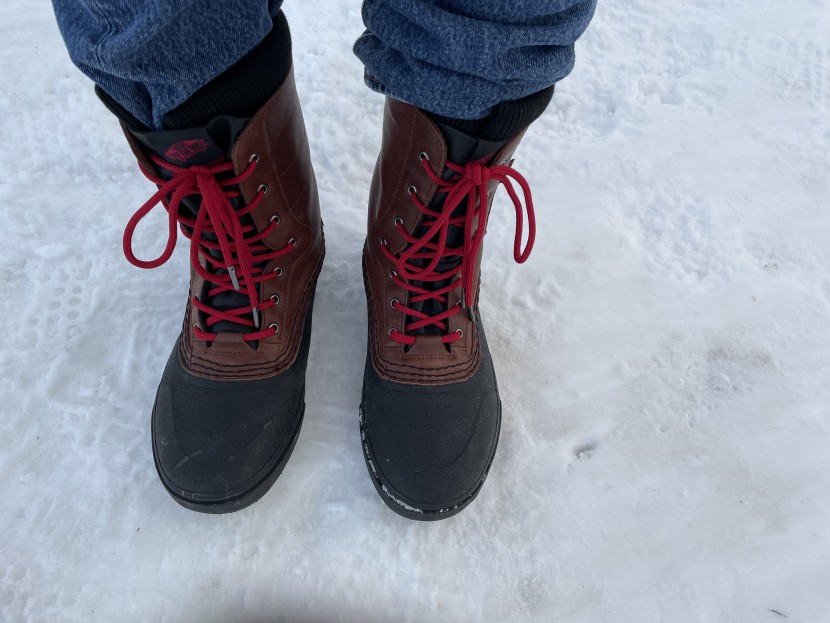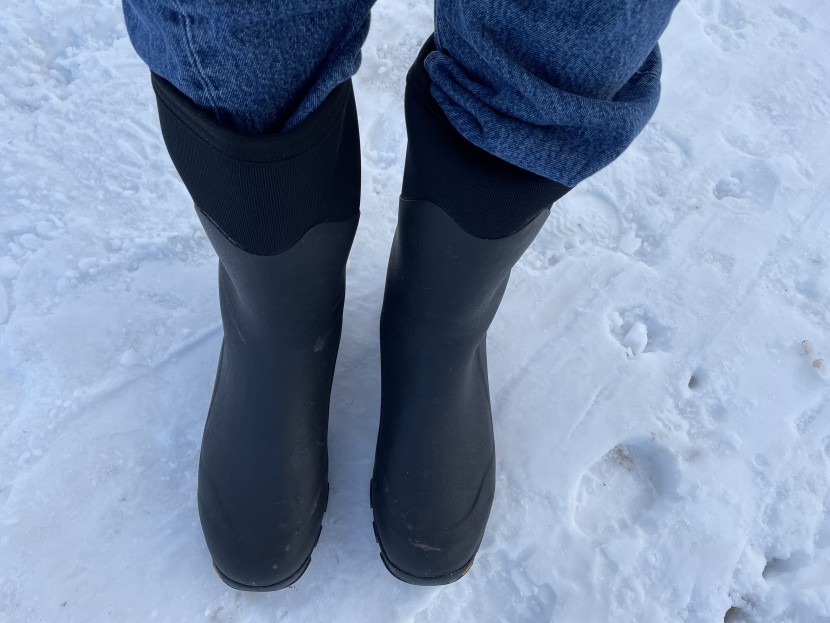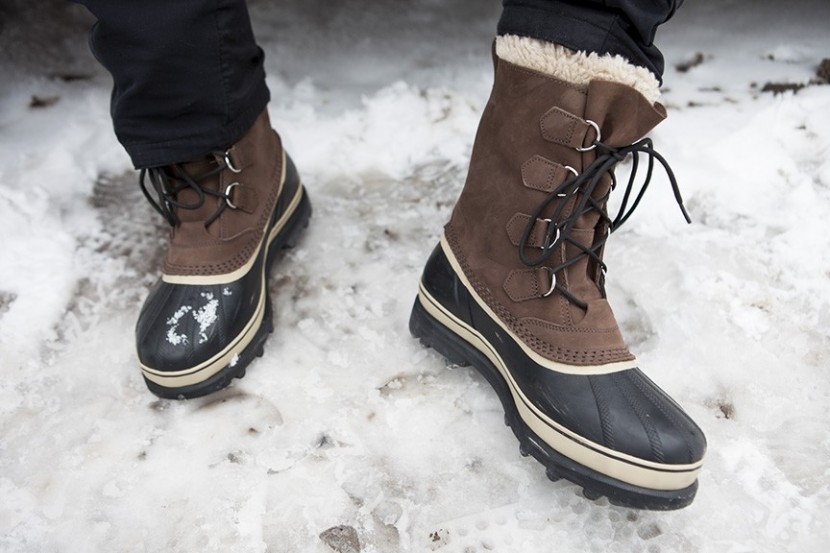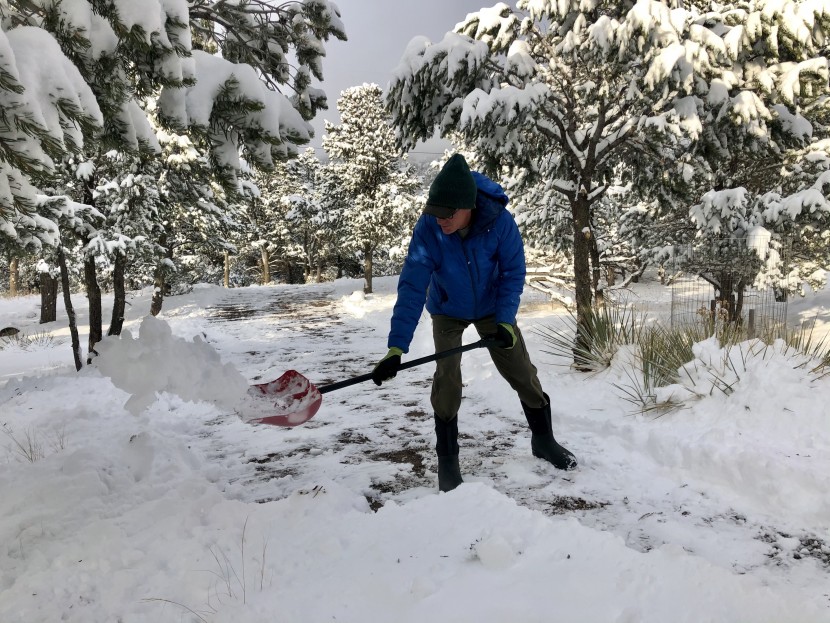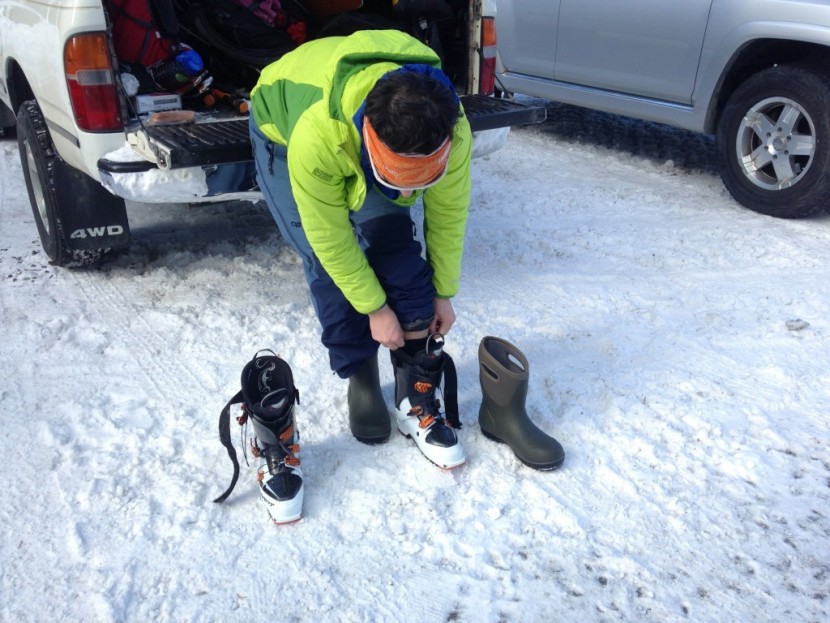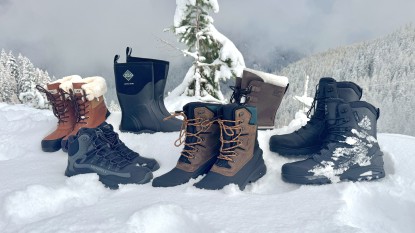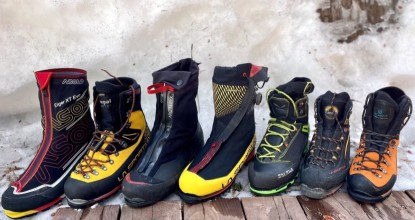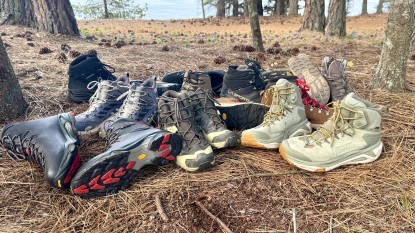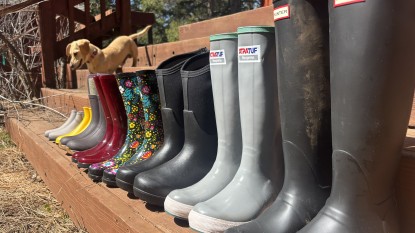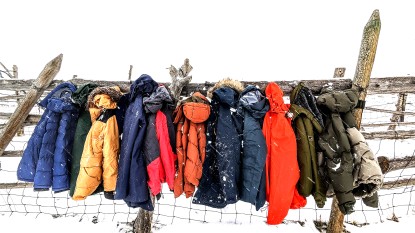With all of the options out there, it can be daunting to find the best winter boots to fit your needs. Narrowing down the selection as much as possible will help make the decision much easier and quicker. This article aims to explain the different styles of winter boots and their best uses, highlight design components for consideration, and help you narrow down your choices so you can pick the perfect boot for your needs. If you want to see our favorite boots, including our recommendations for different purposes, check out our complete review of winter boots for men.
Types of Winter Boots
The winter boots that we tested and reviewed broadly fit into a few different categories based on their design, features, and intent. Below we detail the ins and outs of each type.
Pac Boots
This category of winter boots includes footwear with big rubber soles, tons of insulation, and calf-height uppers. Their name comes from the Pac, or moccasin slipper, traditionally worn inside an outer boot layer with a rubber shell around the foot and tall leather uppers to protect the calf from deep snow. They are often comprised of a soft, insulated liner that slips inside of an outer waterproof shell, or an insulating layer fixed underneath a weather-resistant shell material. Sorel is the brand that catapulted the Pac boot into the modern lexicon when they introduced their now famous Caribou model in 1962. Two years later, they released the Sorel 1964 Premium T. Since then, many manufacturers have begun producing similar styles. Pac boots provide the best weather protection and warmth amongst many types of winter boots.
The major downside to Pac boots is that they are often bulky and clumsy. Also, they sometimes suffer from a sloppy fit that is hard to get snug. As such, they are best used for activities where dexterous footwork isn't needed, and they are too heavy and bulky for winter hiking. These boots are great for casual use around town or for winter chores like chopping wood and shoveling.
Purposes: Winter chores, snowmobiling and sledding, casual errandsExamples: The North Face Chilkat V 400, Sorel Caribou, Vans Standard Snow MTE, Baffin Impact
Insulated Winter Hiking Boots
These boots are designed to keep your feet warm and dry on the trails all winter long. They fit much better than Pac boots, feeling more like a sneaker or summer hiking boots. They also have less insulation than Pac boots because your feet will naturally produce heat during activity. They use waterproof materials, but the uppers don't reach as far up the calves, which helps you walk with more comfort and flexibility. And, they have high-traction soles to grip slippery trails and snowy surfaces. These boots are great for active winter activities like outdoor work and chores on dry surfaces, winter hikes, and general town use when the snow isn't deep.
The main downside to winter hiking boots is that they compromise on warmth and weather protection to allow the user to walk with ease. So, these boots aren't helpful in the most extreme winter climates or in snowy conditions while shoveling or sledding. For users in warmer winter climates where precipitation falls as rain as much as snow and where the snow doesn't pile up deeply every winter, these could be an everyday boot. But for snowy winter climates, a taller and warmer boot is needed. If you're looking for something for multi-day winter camping or hiking trips, you can read our review of mountaineering boots for more options on double-layer boots.
Purposes: Winter hiking, snowshoeing, winter chores, running errands, wearing around townExamples: Merrell Thermo Chill Mid, Keen Revel IV Polar
Slip-On Work Boots
Slip-on boots do not use a lacing system. They often have large handles or pull tabs to help get them on or a loose enough cuff that sliding a foot right in is an easy task. Slip-on boots are made out of many materials, including rubber, neoprene, leather, textile, or sheepskin. They may or may not be insulated depending on the application the boot is designed for and may have varying degrees of water resistance and walking comfort. The main advantage of slip-on boots is convenience.
Slip-on work boots are a long-time favorite for chores and dirty, wet jobs that require the utmost weather protection. They are simple, durable, and easily cleaned shell boots that are easy to put on and take off, and they allow the user to simply step into the boot, pants included. They are very protective and come with varying levels of warmth, depending on the thickness of insulation used in the shell. Because they are designed with slip-on convenience in mind, they often suffer from loose and baggy fits. Work-oriented slip-on boots aren't very comfortable to walk in, and they don't offer much precision.
Purposes: Winter chores, dirty and wet jobs, quick jaunts and errandsExamples: Muck Boot Arctic Sport Mid, Bogs Bozeman Tall
Chelsea Boots
Chelsea boots are a specific style of leather slip-on boot that was popularized in London in the 1960s and have made a resurgence in recent years. These boots are stylish, and their leather outers provide decent weather resistance, but the elastic patch that allows the boots to expand to slip on easily and then retract for a snug fit also allows water to penetrate at very low heights. These boots will not protect your feet if you step into a puddle deeper than a few inches. But if the weather is dry and cool instead of snowy and frigid, these boots provide enough protection. Our favorite part about these boots is that they can transition from looking stylish indoors and around the city to being relatively effective in colder winter climates. They can even be used for light-duty chores and outdoor work. Many users in cold urban climates wear these boots 90% of winter days.
Purposes: Urban winters, errands around town, fashionable occasionsExamples: Blundstone Thermal, Keen Anchorage III
Choosing the Right Winter Boot
With many models to choose from that are all insulated, water-resistant, and cozy, consumers will find that most of the models we reviewed will get them through winter comfortably. Here are some helpful things to look at when considering new winter footwear.
Sizing and Fit
When sizing your boots, consider how you will use them. A loose-fitting model will offer exceptional warmth and comfort for winter chores and extremely cold temperatures but will not have enough comfort for long-distance walking. Tight boots will lead to circulation issues and colder feeling toes. Size your boots appropriately using the socks you intend to use and make sure you have enough room in the toe box to wiggle your toes around. Warm feet are happy feet, and a pair of properly fitting winter boots will make the colder months more enjoyable.
We rated each boot for fit and comfort, and while this may be a subjective metric, we discuss each boot's sizing on its individual product page. Winter hiking boots and Chelsea boots generally are true to size and offer a snug, comfortable fit, while Pac boots and slip-on boots often feel loose for the size and have plenty of (or potentially too much) room around the toes.
Insulation
To keep your feet warm in cold temperatures, your boots need to have some insulating material to trap heat inside. Insulation combined with an exterior waterproofing material will result in a quality piece of footwear that will excel in both wet and cold environments.
The boots we reviewed have two types of insulation: synthetic fiber insulation and neoprene. Neoprene, used in slip-on models such as the Muck Arctic Ice Mid and Bogs Bozeman Tall is the same textile used in cold weather fishing gloves and wetsuits. Neoprene is warm, very durable, and will not pack out and lose its insulating properties over time. In tight-fitting neoprene garments, there is often a clammy feeling as it does not breathe well. When used in a looser-fitting boot, this is not really an issue. It is not the warmest material, though, so it's most appropriate for moderate climates and wet weather.
Synthetic insulation consists of spun plasticized fibers that are integrated into the lining. Much like the synthetic insulation used in puffy jackets and sleeping bags, this insulation is most effective at trapping heat when allowed to expand and “loft.” This loft gives Pac boots like the Baffin Impact a soft and cushiony feel, as the room between the outer boot and liner allows the insulation to loft fully. However, this leads to a looser fit. The amount of insulation used and how it is sewn into the inside of the boot will also have a bearing on fit and warmth. If the insulation is tightly packed, it might feel as warm as a boot that uses much less insulation but allows it to loft up. Synthetic insulation feels softer and provides more cushion than neoprene.
Most of the synthetically insulated boots in our review disclose the density of insulation used. Most boots use between 200g and 400g/m2 densities of synthetic insulation. This number doesn't refer to the actual amount of insulation used or the corresponding weight of that insulation, but rather to how densely packed the fibers are. In one square meter of insulation, 400g will have double the weight of 200g, so it is thicker and has more fibers. As one might expect, higher-quality insulation often comes at an elevated price tag.
Weather Protection
Water holds its temperature much faster than air, and in the wintertime, whatever water you may encounter is likely to be very cold. Bootmakers protect the foot from outside moisture in two ways. The boot can be made using inherently waterproof materials like treated leather or rubber, or it can be constructed using a thin waterproof membrane sewn into the interior lining of the boot. Using fully waterproof materials like leather and rubber will keep water out, but often at the cost of breathability. Depending on the material used, the outer shell may need to be periodically treated to keep it shedding water as well as when it was brand new, especially if an animal leather was used.
Boots that incorporate a waterproof/breathable membrane ensure that water coming in from the outside will never reach the wearer's foot. While this may be true, attention must still be given to the outer materials since waterlogged fabrics will inhibit the transference of sweat from the inside of the boot, resulting in a feeling of coldness and dampness — akin to water having leaked inside.
All of the insulated winter hiking boots that we tested claim to be waterproof, and many of them proved to be just that — up to the top of the tongue, of course. However, our submersion testing has revealed that not all boots are created equal in this regard — some have leaks where there are seams between materials, while others simply have low gussets on the tongues that can let in water from shallow puddles. While we're confident that all of these boots will keep your feet dry in cold, dry snow, spending hours in slushy wet snow will put them to test. We encourage you to read our individual product reviews before settling on a certain product to make sure it lives up to the waterproofing claims made by the manufacturer.
Lacing
The type of laces used will impact the fit of your boot as well as its convenience. Pac boots with many lacing eyelets allow for a comfortable fit but are difficult to lace over the top of the foot tightly. They are easier to tighten around the shin. On the other hand, insulated winter hiking models often use speed-lacing eyelets over the top of the foot for a quick and secure fit. Lacing hooks at the top then allow you to customize security around the ankle. While these systems are the most customizable for foot security and a tight fit, they are also the most labor-intensive to use.
Slip-on boots don't have laces, allowing for excellent convenience. However, this also means that a tight fit is impossible to achieve. These boots are best used for basic chores where precise footwork is unnecessary, and we don't recommend them for driving.
Weight
All winter boots will be heavier than a pair of running shoes, but there is some variability in the weights of the models we tested. Chelsea boots tend to be the lightest winter boots, weighing between two and three pounds per pair. This is because they don't have insulation above the soles. Winter hiking boots are also relatively light, weighing between two and four pounds per pair. These boots must be lightweight because they are often asked to deliver comfort for walking long distances.
Pac boots and slip-on work boots generally have more insulation and durability, as well as huge soles, weighing in between four and six pounds per pair, and even more for the most heavy-duty models. That extra couple of pounds might not matter very much when shoveling the driveway for 20 minutes, but if you spend the whole day out in your boots, you'll certainly appreciate having a lighter pair.
Choosing a Boot Based on Intended Use
What do you need to accomplish while wearing your boots? If you only need to don a pair of boots to shovel the driveway, pick something up from the market, or commute, then your options are broad. You will likely be happy wearing any winter boot. But if you live in snowy winter climates, do a lot of chores and work outdoors, have an active winter hobby, or care about your boots' style, then your options are more limited. Owning a pair of versatile winter boots also allows you to try new things because you already own the equipment to be comfortable in cold and wet winter weather.
Working Outdoors and Chores
If you work outside in the winter or spend a lot of time shoveling, chopping wood, or walking the dogs, then you need a boot that can stand up to inclement winter weather. The chores don't stop just because it's cold and snowy outside. For standing around or working hard in the cold all day, we want the warmest and most comfortable boots we can find. Pac boots are a logical choice, as they are easy to dry out around the fire or in front of the heater each night and are both comfortable and warm. Some of the high-end insulated winter hiking boots will also be great for working outdoors, as they are the warmest choices and also lightweight for walking around all day. They are harder to dry out quickly, though, so be sure to keep up on their waterproofing. Slip-on work boots are good for basic chores and dirty jobs, but they lack the refinement and features that most users will want for all-day use.
Winter Hiking
For winter hiking, you want a waterproof boot that is also lightweight and comfortable for walking around in all day. The genre you need to focus on is insulated winter hiking boots. These boots are light and comfortable for all-day fun, and they can also be used for a variety of activities like chores, errands, walking the dog, and general winter use. They often have low calf heights, making them less suitable for shoveling or working in climates where it snows a lot.
Snowshoeing
For snowshoeing, your needs are much the same as for winter hiking. Snowshoeing comes with one added implication — deep snow. Although it's not uncommon to see people wearing snowshoes on packed down trails in winter, we find it is only worth dealing with their oversized clunkiness when they are truly needed — for venturing out off-trail through the deep snow. All of the insulated winter hiking boots will work for this purpose; however, be aware that unless you are wearing a boot with a very high ankle cuff, you are going to want gaiters to prevent snow from entering the tops of your boots.
For Before and After Skiing
Everyone likes to ski on a powder day, but that powder doesn't only fall on the slopes, it falls everywhere else too. From shoveling the driveway in the morning to loading up the car to herding the kids to ski school, you need a pair of comfortable and protective winter boots. Likewise, once those clunky, tight, uncomfortable ski boots come off at the end of the day, you want something convenient, loose, and comfortable (not to mention warm and waterproof!) to slide your foot into. While technically any winter boot will work, our years of living in cold, high-altitude ski towns has taught us that convenience and comfort are king for après ski use. We like Pac boots that can be worn without tying the laces, or even slip-on work boots, for these kinds of days. But be warned that neoprene slip-ons might not be warm enough for the coldest ski days.
Winter Mountaineering and Ice Climbing
Don't try to use any of the winter boots in this review for winter mountaineering or ice climbing. In general, they are not stiff or protective enough and also are not compatible with crampons. Check out our mountaineering boot review if you need something more technical.
Accessories
Despite all their waterproofing and breathability efforts, sometimes your feet, and boots, get wet. It's easier to dry boots with removable liners, but we often find that the hassle of getting the liners back into the boots isn't worth the effort. For these reasons, we recommend a boot dryer like the DryGuy DX Forced Air to aid in the drying process. When coming home from a day on the slopes, it's nice to throw your boots and gloves on the drying stand and know they'll be ready to go in the morning.
If you're going out on winter hikes, you may want extra flotation to keep you from sinking into the snow. Our Snowshoe Review highlights the models we like the most and explains why. If icy conditions are a concern, snow grips are a great idea. You can read all about the best snow grips we tested in our comprehensive snow grip comparison review.
Conclusion
A good pair of winter boots is a critical piece of gear for enjoying the coldest time of the year. With a wide selection of styles and models to choose from, it is useful to ask yourself what activities you will most likely use your boots for and then nail down some options from there. We hope that this article and review have helped introduce you to your new boots.

